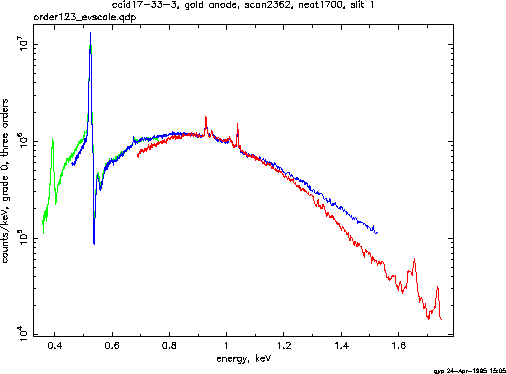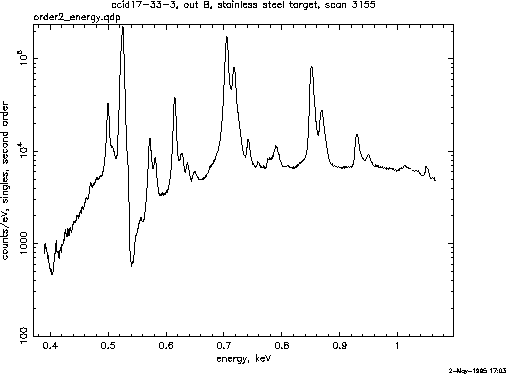
Figure 6: Intensity as a function of energy for three orders of the spectrometer with a gold target in the X-ray source.
After the row-to-energy relation is established, all the results can be plotted as a function of energy. Plots of intensity (number of photons of a given energy seen by the CCD) as a function of energy for the first three orders for a frontside illuminated CCD are shown on Fig. 6. Here the same emission lines in different orders come together, since they have the same energy. They are aligned with an accuracy of better than 0.2 eV.

Figure 6: Intensity as a function of energy for three orders of the spectrometer with a gold target in the X-ray source.

Figure 7: Intensity as a function of energy, second order, stainless steel target.
The data shown on Fig. 6 were taken with the gold target in the
X-ray source. The spectrum
is dominated by bremsstrahlung radiation with a few emission lines. The strong
line at 0.525 keV is oxygen  , weaker ones are nitrogen
, weaker ones are nitrogen  at 0.392 keV, copper
at 0.392 keV, copper  (0.930 keV) and
(0.930 keV) and  (0.950 keV),
and sodium
(0.950 keV),
and sodium  (1.041 keV). The origin of all these lines
can be explained by the contamination of the surface of the target. A film
of hydrocarbons is building up on the surface (this has been confirmed
by a separate X-ray photoemission spectroscopy, or XPS, study) and that is why
emission lines intensity
changes over the time.
(1.041 keV). The origin of all these lines
can be explained by the contamination of the surface of the target. A film
of hydrocarbons is building up on the surface (this has been confirmed
by a separate X-ray photoemission spectroscopy, or XPS, study) and that is why
emission lines intensity
changes over the time.
To illustrate how powerful is this setup as a spectroscopic tool on Fig. 7 is shown a spectrum produced by a stainless steel target. Numerous L series of iron, cromium, vandium, manganese, copper lines reveal a complex composition of the target material.